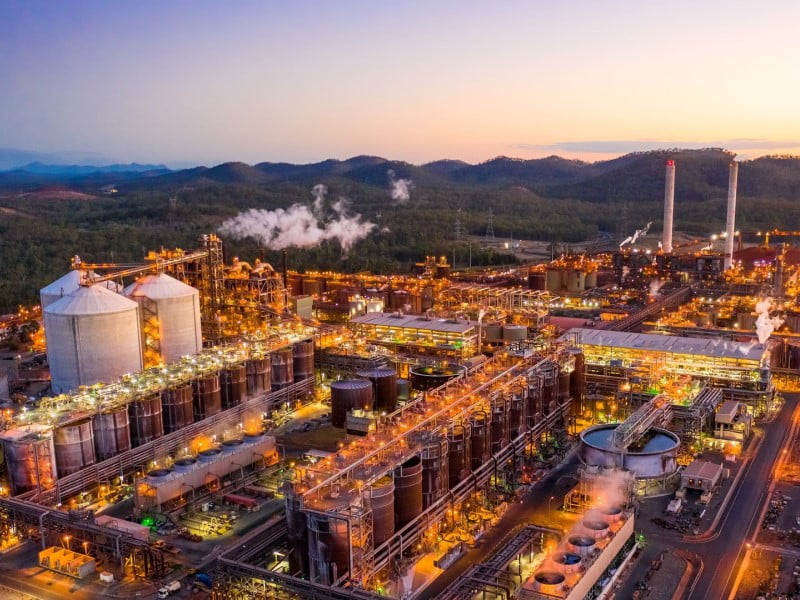Rio Tinto and Japanese conglomerate Sumitomo Corporation have secured a $32.1 million grant from the Australian Renewable Energy Agency to advance a hydrogen pilot project aiming to decarbonise alumina refining.
An existing calciner at Rio Tinto’s Yarwun refinery in Gladstone used to refine bauxite into the aluminium precursor alumina will be retrofitted with a hydrogen burner. Tests will be undertaken to evaluate suitability and performance under varying operating conditions.
Rio Tinto and Sumitomo claim this is the world’s first deployment of hydrogen calcination. A 2.5MW electrolyser will also be installed at the site, capable of producing 250 tonnes of hydrogen per year.
The announcement follows the identification of 12 potential renewable energy zones (REZ) by the Queensland state government on Monday. Queensland has also committed $6 million to undertake REZ regional strategic assessments.

Calcination involves heating bauxite at temperatures up to 1,000 degrees Celsius. There are currently four natural gas calciners at Yarwun.
The pilot stage of the hydrogen calciner project, valued at $111.1 million overall, follows a $1.2 million feasibility study undertaken in 2021, which the Australian Renewable Energy Agency contributed $580,000 towards.
Construction begins in 2024 with the hydrogen plant and calciner expected to be in operation by 2025.
The pilot is expected to produce 6,000 tonnes of alumina per year and reduce Yarwun’s carbon dioxide emissions by about 3,000 tonnes per year.
Australia is the world’s largest exporter of Alumina generating export revenue worth $14 billion annually.
Alumina refining currently accounts for around three per cent of Australia’s gas emissions, with fossil fuel calciners accounting for 30 per cent of emissions in the refining process.
Further, hydrogen calcination produces high purity steam which can be recycled for use in later stages of the refining process. This is unlike the ‘contaminated steam’ produced through fossil fuel calcination.
Hydrogen calcination was identified in ARENA’s Alumina Decarbonisation Roadmap, published last year, as one of four technologies to collectively help cut emissions in the sector by up to 98 per cent.
Climate Change and Energy minister Chris Bowen said that “this technology could also pave the way for other hard-to-abate sectors to reduce their emissions”.
Consultation on an update to the national hydrogen strategy is currently underway and seeking views on industrial decarbonisation through the development of a clean hydrogen industry.
The Queensland government’s draft REZ roadmap “outlines a pathway for connecting 22GW of new wind and solar generation” to the proposed SuperGrid, in support of the $62 billion Queensland Energy and Jobs Plan. The state aims to generate 80 per cent of its energy needs from renewables by 2035.
The 12 REZs are to be developed across three phases to 2035, and focus on “unlocking new areas of the Queensland shared transmission network”
Public submissions on the draft REZ will close on September 22, 2023. The final REZ roadmap is expected to be complete in late 2023 or early 2024. The first REZ declarations are expected to be underway in 2024 alongside the establishment of supporting Regional Energy Reference Groups.
Do you know more? Contact James Riley via Email.

